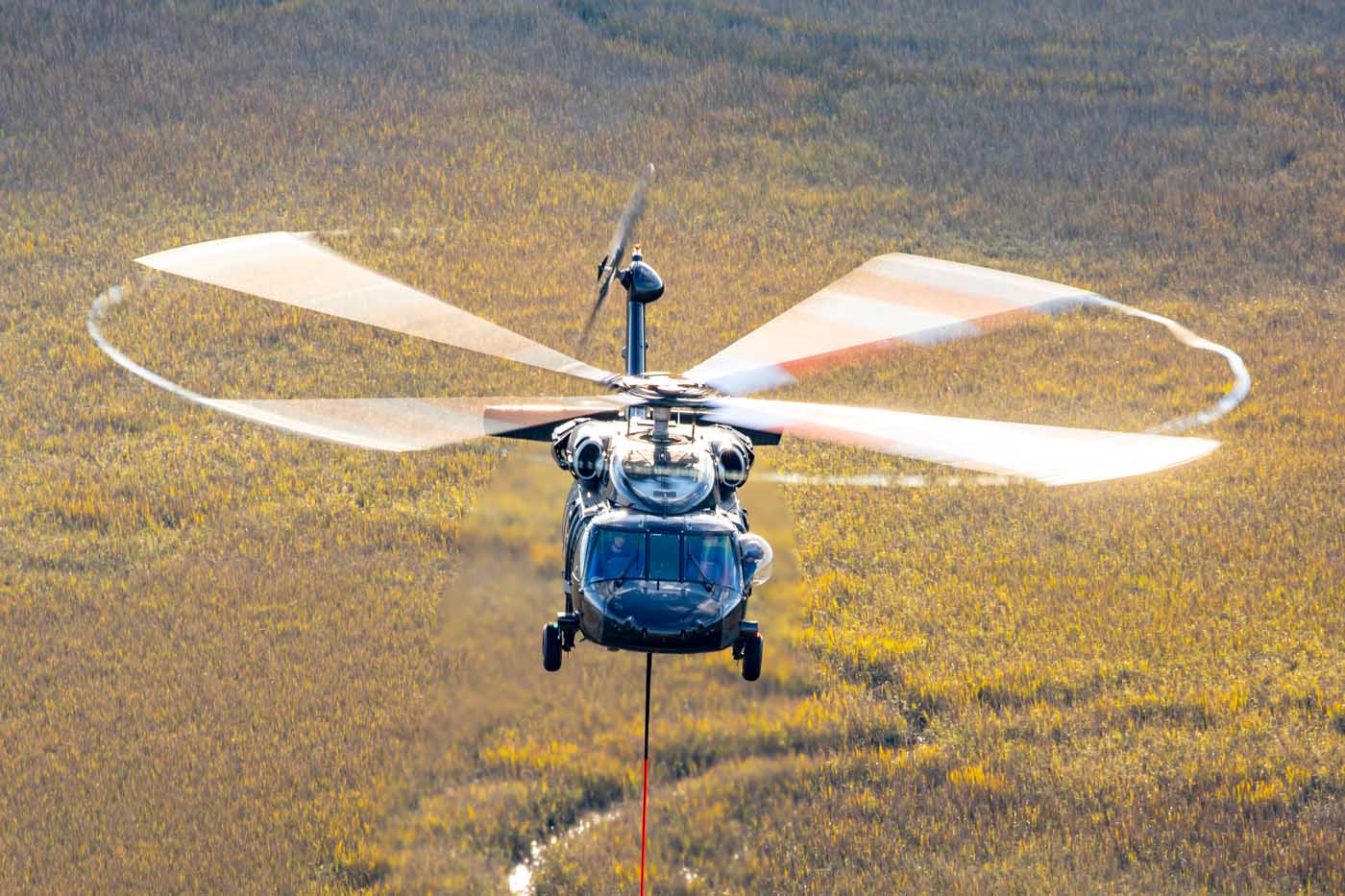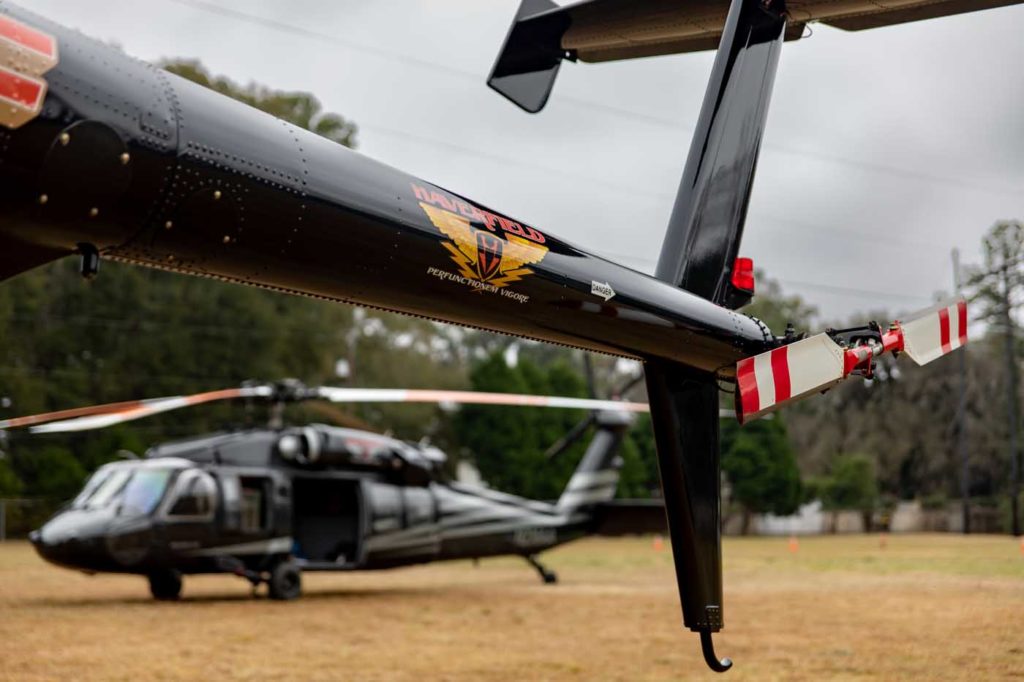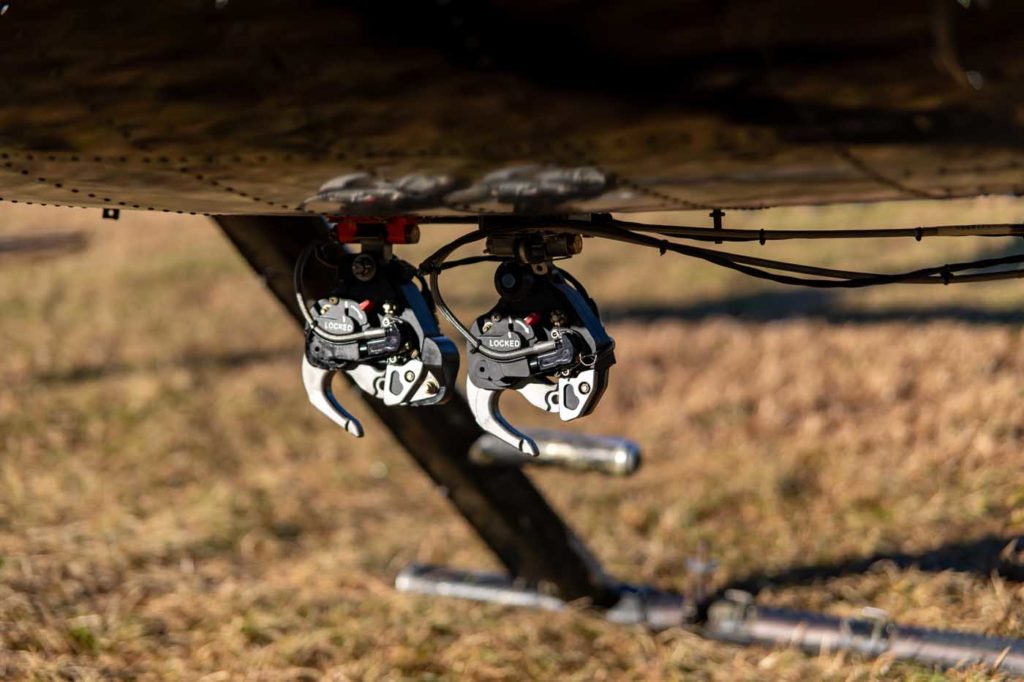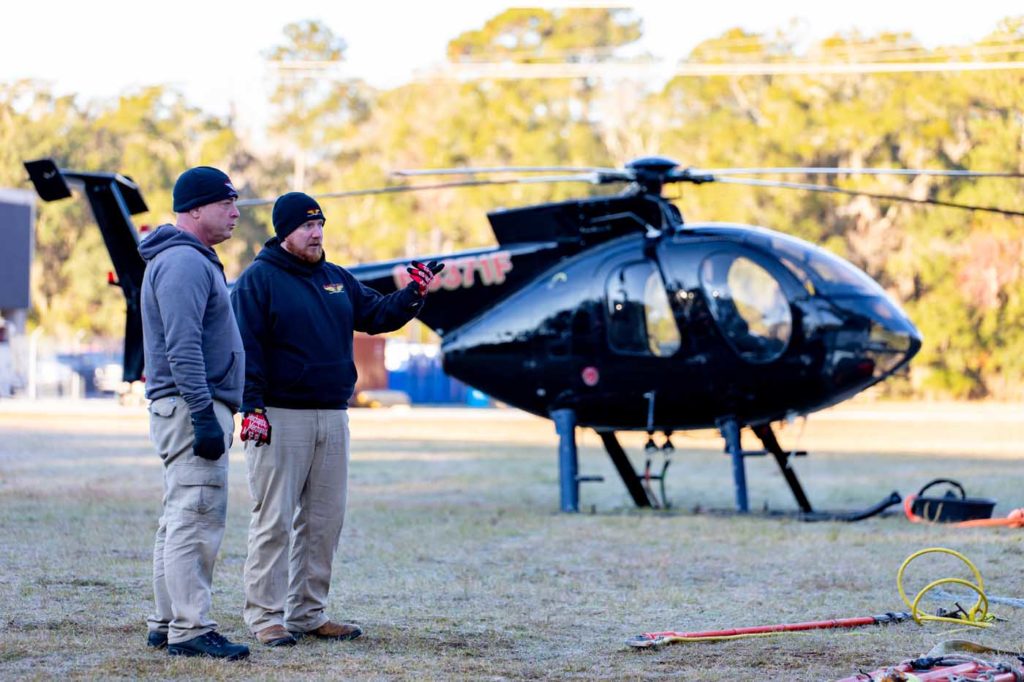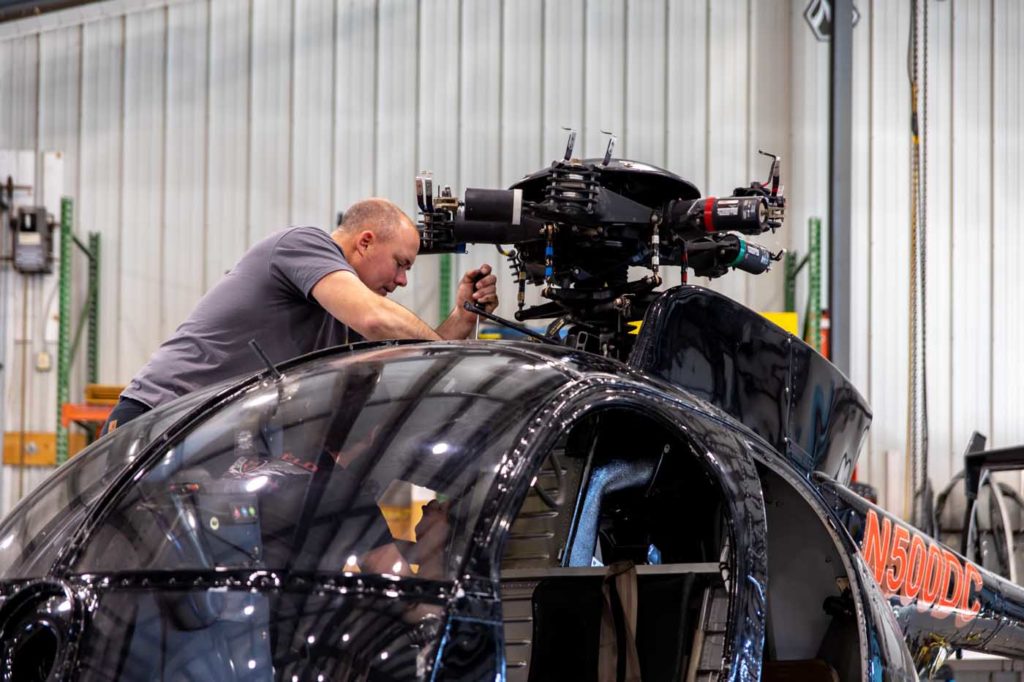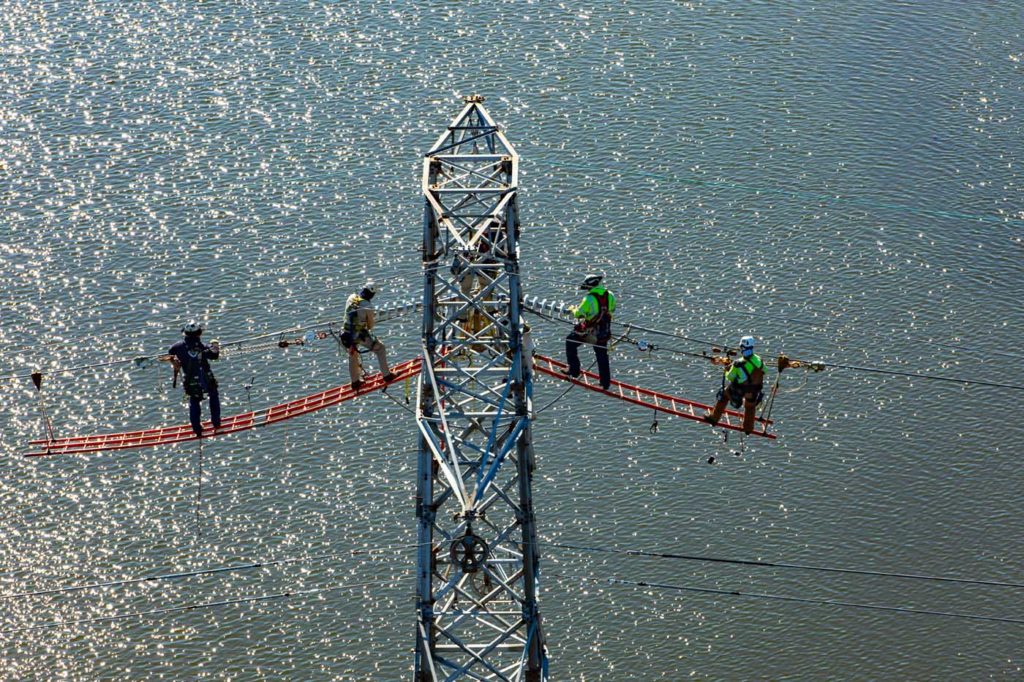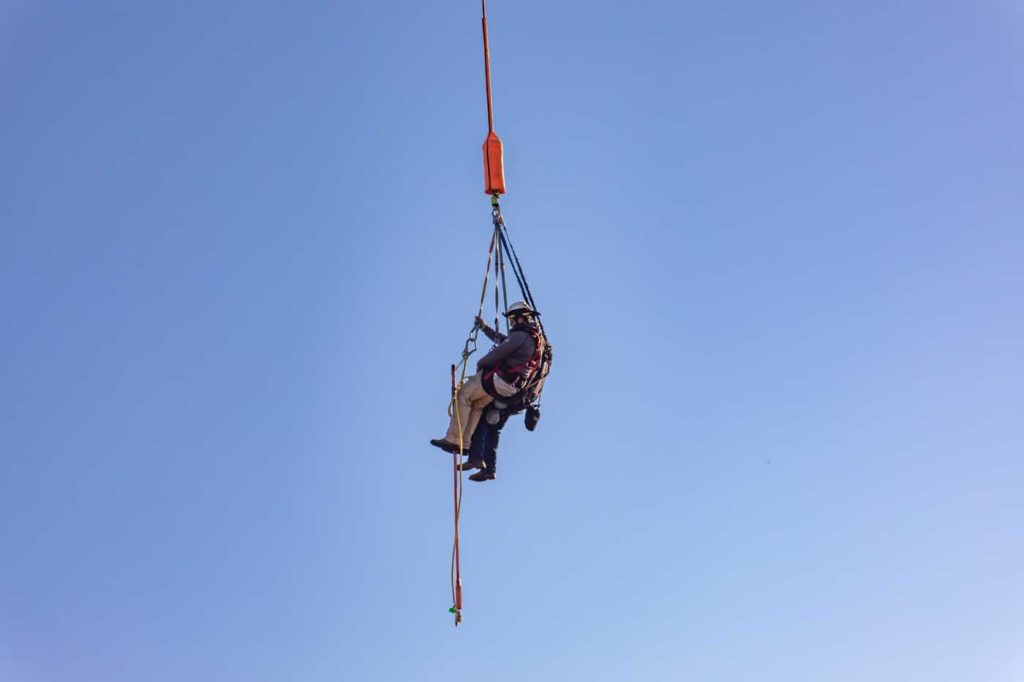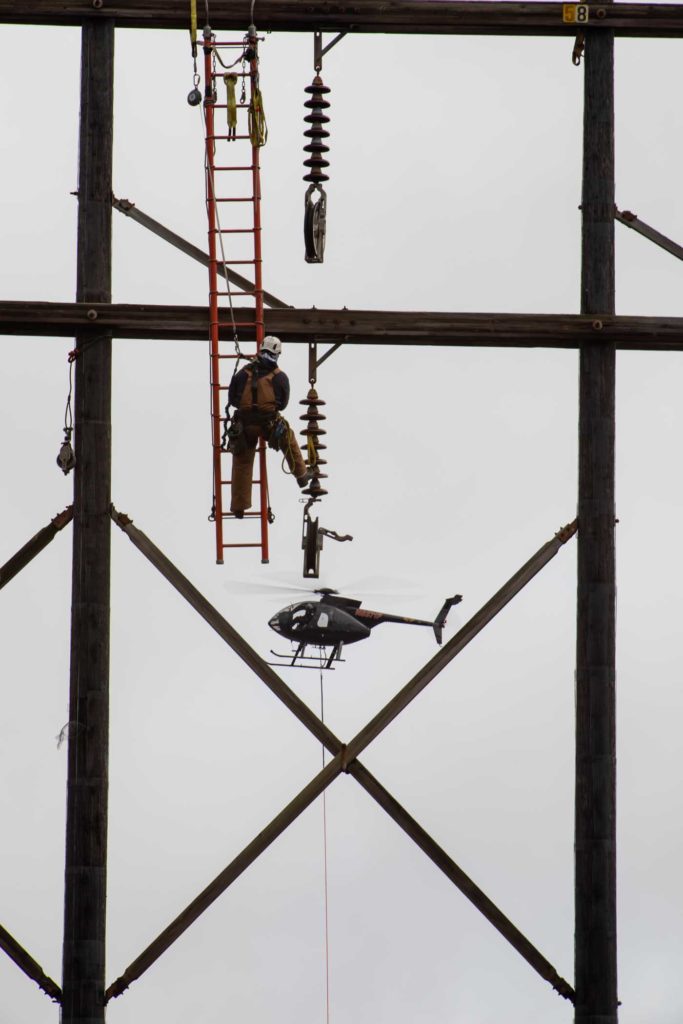What would happen if a helicopter hovered next to a power line that’s transmitting up to 765,000 volts of electricity, then allowed a passenger to reach out and touch the wire? Until 40 years ago, no one really knew. There were theories, but they were all untested. As with a variety of vertical lift tasks that are today taken for granted, at some point, someone had to be the first. One of the innovators in this specialized line of work was Haverfield Aviation. Four decades later, the company still leads a crowded field of aerial transmission services, where high-powered danger is just inches away.
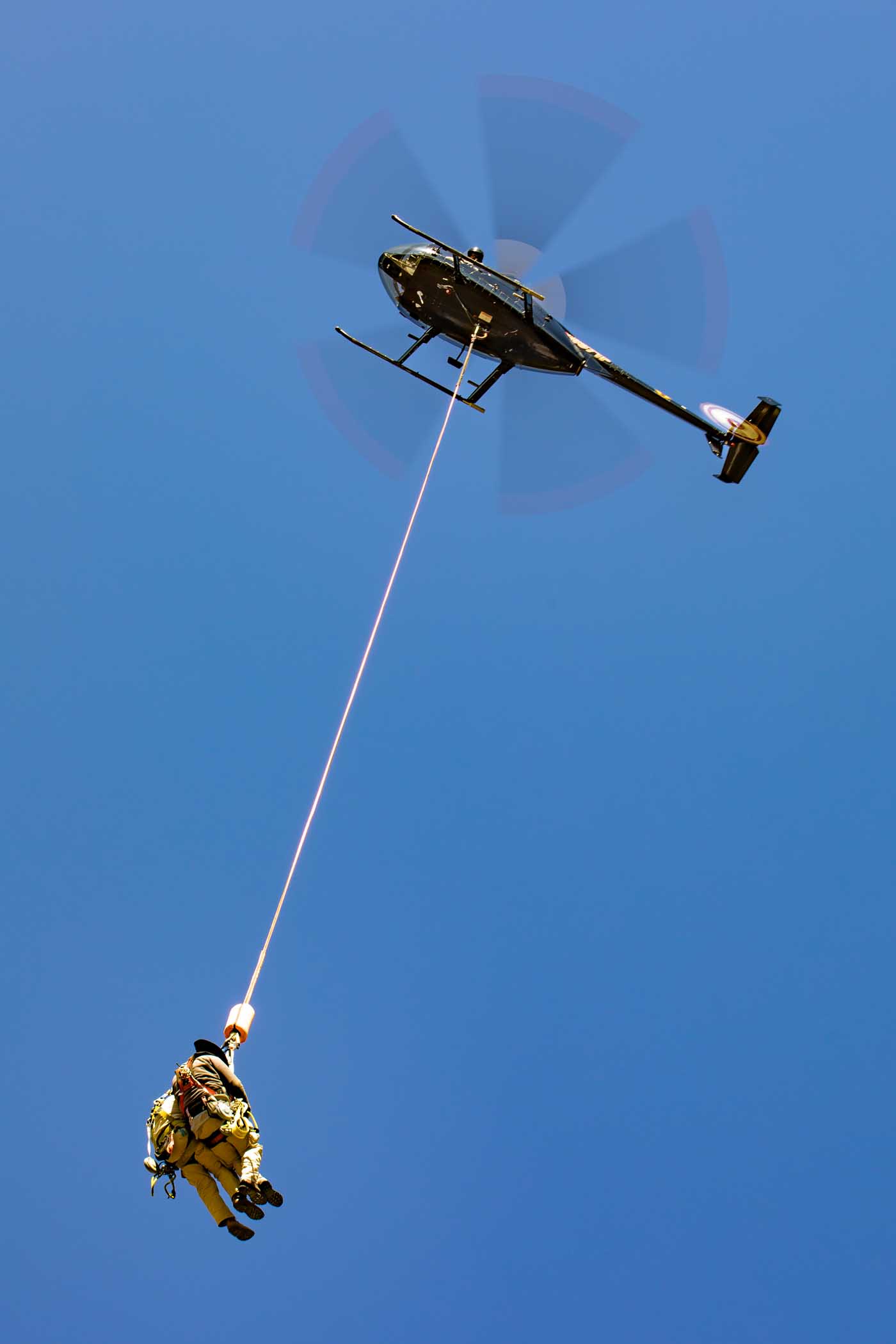
Prior to the 1980s, power line work was completed by ground-based bucket trucks or linemen climbing towers and walking along the wires. Mountainous terrain, poor weather, and inaccessible locations are just some of the reasons for choosing an aerial alternative. Recognizing the shortcomings and challenges that many energy providers faced as electrical grids expanded nationwide, Haverfield stepped onto the scene in 1983 to offer their aerial approach.
Opening its doors in Miami, Florida, the company pioneered and patented its use of helicopters for live transmission line work. Essentially, Haverfield mastered the now-standard approach of working on electrical lines without turning them off. Not only did this mean power companies no longer had to shut down or reroute power, but it provided safer working conditions for linemen, as well as greater efficiency and cost savings. Helicopters aren’t cheap to operate — but energy providers quickly realized the gains in the volume of work that could be completed in a single day compared to the previous approach.
One example is the installation of conductor spacers. These aluminum and elastomer devices have a simple, but vitally important, purpose: to keep power lines separated. As they age, they need to be inspected and eventually replaced. Using helicopters, the spacer removal and installation process can be completed 30 times faster than any other method. With these spacers mounted every couple of hundred feet, along hundreds of miles of line, it would be a daunting, time-demanding job, if not for the aircraft.
Spacer replacement is just one element of Haverfield’s power line service. The company has a mission to be a “one-stop-shop for a power grid that can’t stop,” with an exhaustive list of services that includes new build construction, line inspections (including x-ray and infrared camera work), line repair, marker ball installation, insulator washing, aerial tree trimming, medium/heavy operations, and much more. If there is a job to be done by helicopters in the field of power line work, Haverfield can do it.
Relocation and Expansion
After a successful decade-and-a-half operating out of Florida, Haverfield was purchased by AG Rotors and moved to Gettysburg, Pennsylvania. In 2001, Haverfield separated from AG Rotors, and moved a short distance away within the state to Fairfield. The tables were turned six years later, when Haverfield purchased AG Rotors. The companies were combined, and Haverfield returned to Gettysburg, its home base to this day. That acquisition and move were pivotal for the growth of the company.
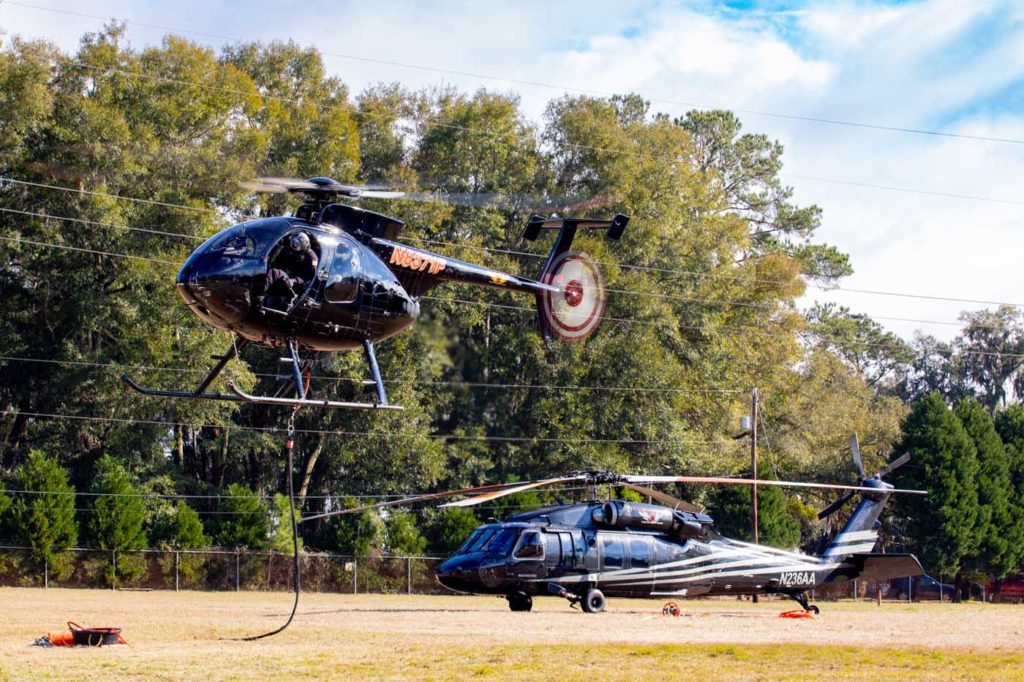
“When we bought AG Rotors and moved back to Gettysburg, we doubled our fleet overnight,” said Stanton Braun, Haverfield’s vice president of operations. “We went from having five helicopters to 10, all MD 500s, which still make up the bulk of our fleet.”
Although the company’s headquarters is in Gettysburg, it’s rare to see more than a few helicopters at that location.

“If a ship is here, that means we’re not making money on it!” Braun said. When the aircraft do need to be home, a highly experienced team of 25 mechanics is on-hand for just about any type of work that may be required. Its facility includes an avionics shop with three specialists, a paint room, and an engine room. Other than engine overhauls, which are sent out to Dallas Airmotive, most everything is done in-house. So much so, Haverfield is currently working towards obtaining part 145 repair station certification. Braun hopes to have that in hand within the next few months.
The latest chapter in the Haverfield story began in 2019, when industry-leading specialty contractor Quanta Services brought it into their fold. Founded in 1997, Quanta has assembled a collection of over 200 companies in the fields of electric power, natural gas, and pipeline work. Becoming part of this conglomerate brought in additional capital, which has allowed further expansion of the fleet — peaking at 25 aircraft. Included in the Quanta family are several other helicopter power line operators. “Businesses that used to be our competitors are now our sister companies,” Braun said. “The competition for certain jobs has been greatly reduced.”
In the 40-plus years that helicopters have been used for power line work, one aircraft stands out as the go-to platform for its durability and precision handling: the MD 500. Throughout its seven-decade production run, there have been numerous iterations of the iconic copter. And, while most models would be suitable for this type of operation, Haverfield has settled into a groove with two variants.
It has a fleet of 22 MD 500s (making it one of the largest civilian MD 500 fleets in the world), including six E-models and 16 D-models. Although the E-models are the newer version, Haverfield pilots tend to prefer the D-models, with their rounded-nose front ends making them more controllable in crosswinds. In most situations, helicopter pilots can turn their aircraft into the wind, but power line pilots have no choice but to hover parallel to the wires, regardless of the wind direction.
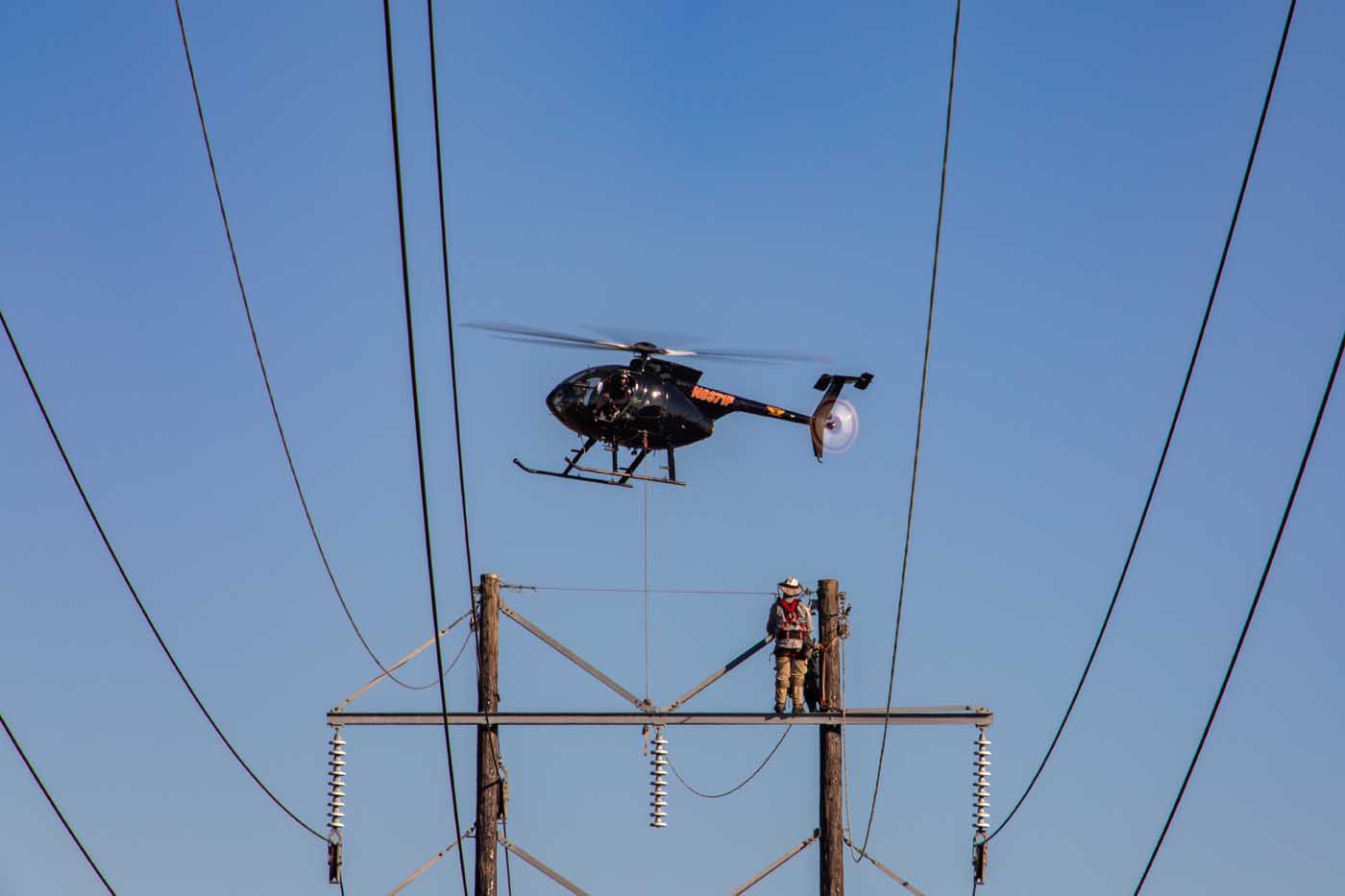
Uniformity across a fleet is always easier on both pilots and mechanics. For that reason, Haverfield sticks to the 420-horsepower Rolls-Royce M250-C20B engine, previously manufactured as the Allison Model 250. Most job sites are located where the additional power of the upgraded motors is not necessary.
All Haverfield MD 500s are certified in platform operations, external load (including human loads), and wire pulls. Wire pulling is usually done by side-pulling, with which the MD 500s have a 1,900-pound rating capacity.

For the more demanding, heavy-lift work, the team has traditionally turned to its Bell UH-1H Huey. The 1967 H-model is equipped with a 1,400-horsepower Lycoming T53-L-703 engine, and its lifting ability makes it a good fit for construction support assignments, where it’s used for setting power poles and other structures, concrete delivery, and to place large steel tower tops.
“In most situations, helicopter pilots can turn their aircraft into the wind, but power line pilots have no choice but to hover parallel to the wires, regardless of the wind direction.”
Accentuating the Huey’s performance is the addition of the BLR FastFin Tail Rotor Enhancement and Stability System. This extension of the tail components allows for increased useful load and reduced tail rotor pedal requirements. This helps to enhance safety and reduce pilot fatigue.
While the Huey was Haverfield’s only option for heavy lifting for many years, that all changed in 2017, with the arrival of a Sikorsky UH-60A Black Hawk. Purchased through Arista Aviation, the 1981-model has twin 1,546-horsepower GE-T700 engines, and can lift over 7,000 lb. With its power and stability, it naturally picks up where the Huey tops out. It has quickly became a favorite for Haverfield’s most demanding jobs.
One thing that won’t be found in any of the Haverfield helicopters is advanced avionics — and this is by design. Steam gauges are preferred not for their nostalgia, but their simplicity. It wouldn’t take much of a hiccup from attaching to a high-voltage power line to send a surge to the aircraft, which would mean a quick ending for anything computerized that’s along for the ride.
For this reason, the pilots prefer external navigation systems, like the portable Garmin GPSMAP 696 that’s mounted in most of the company’s ships. A side benefit to this approach is the lack of touchscreens. Most operations are flown with doors off, many times in cold weather. This necessitates heavy clothing, including gloves, that don’t work well with touchscreens. None of the aircraft are instrument flight rules (IFR)-certified, so for Haverfield, older tried-and-true systems get the job done.
In the field
Daniel Arenson joined Haverfield in 2007 as a utility and long line pilot, becoming chief pilot in 2014. He supervises the company’s 24 pilots, who are spread across the country on assignments. While all Haverfield’s pilots fly the MD 500, only two are currently qualified in the Black Hawk. More are being trained on the company’s latest fleet member.

“The Hawk was a great addition to our fleet,” Arenson told Vertical. “It has added a new level of capability to what we can do. Without question, it gets us jobs that we would not get if we didn’t have it.”
The locales in which Haverfield operates are as varied as the type of work it performs. “We cover pretty much the whole country,” said Arenson. “There are jobs that we may work for a week, a month, or several months. We also have sites that are year-round contracts.”
Pilots typically work three weeks on, three weeks off. Depending on the size of the mission, a work crew may be as small as 10 linemen and two pilots, or can include a couple of dozen workers, supported by several aviators. And, just as with most sectors of the aviation community, pilots can be hard to come by these days.
“We get them from a variety of fields, including law enforcement, EMS [emergency medical services], military, etc.,” said Arenson. “We don’t require high-time guys, but this is demanding, exacting work and it takes the right kind of helo pilot.”

On the side of every Haverfield helicopter is its trademarked Latin phrase Perfunctionem Vigore. The loose translation is Energized Performance. For 40 years, the crews at Haverfield have followed that creed to ensure its customers are never without the power they need. The company mission statement is Growth with Strength and Honor. With a fleet of aircraft perfectly suited for the tasks at hand, management that continues to guide them down the right path, and crews that perform at the top of their fields in some of the most demanding environments, there is no question why the trailblazers of this field continue to excel.





